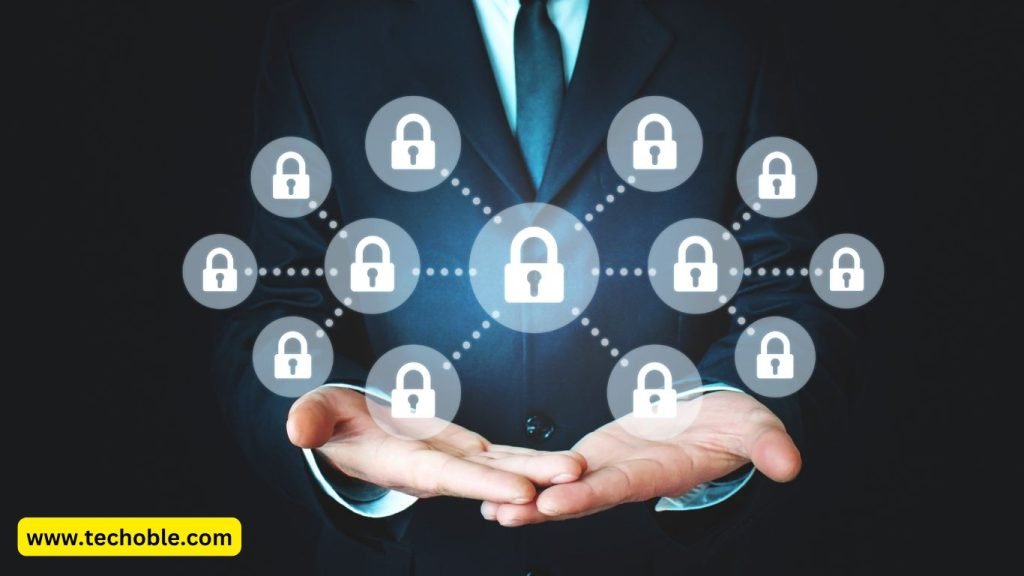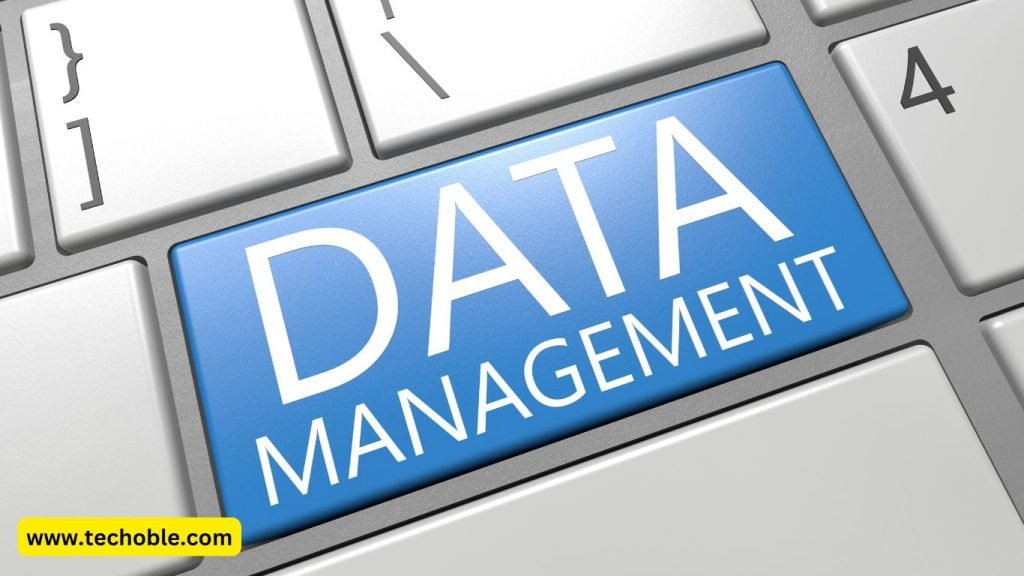 In today’s world, secure data management is a critical concern for businesses and individuals alike. Data breaches and security vulnerabilities have made traditional data storage methods less reliable, leading to the rise of innovative solutions like blockchain. Blockchain technology offers a powerful and secure approach to managing data by making it immutable, transparent, and decentralized. This article explores how blockchain can enhance data security, its applications, and the advantages and challenges associated with it.
In today’s world, secure data management is a critical concern for businesses and individuals alike. Data breaches and security vulnerabilities have made traditional data storage methods less reliable, leading to the rise of innovative solutions like blockchain. Blockchain technology offers a powerful and secure approach to managing data by making it immutable, transparent, and decentralized. This article explores how blockchain can enhance data security, its applications, and the advantages and challenges associated with it.
What is Blockchain Technology?
Blockchain technology is a decentralized digital ledger that records transactions in a secure, transparent, and unalterable manner. Each transaction is stored in a block, and these blocks are linked, forming a chain. Blockchain’s design makes it nearly impossible for data to be altered or tampered with, as each block is cryptographically secured and connected to the previous one.
In simpler terms, blockchain functions as a database that stores information securely without the need for a central authority. This decentralization is the backbone of blockchain’s security, as it eliminates single points of failure and reduces the risk of data breaches.
How is Blockchain Used in Data Management?
Blockchain’s structure allows it to offer several key benefits for data management:
- Data Integrity: Blockchain’s immutable nature ensures that once data is entered, it cannot be changed. This is crucial for maintaining data accuracy and preventing tampering.
- Transparency: With blockchain, every participant in a network can view data and verify its authenticity. This transparency helps build trust among users.
- Decentralization: By distributing data across multiple nodes, blockchain removes the dependency on a single entity. This decentralization adds an extra layer of security.
- Access Control: Blockchain enables fine-grained access controls, allowing only authorized individuals to view or modify data.
Why is Blockchain Important for Data Security?
In a world where data is constantly at risk, blockchain provides a robust solution to secure sensitive information. Blockchain technology achieves data security through its unique properties:
- Tamper-Proof: The chain structure prevents unauthorized modifications. Each change requires the consensus of all network participants.
- Cryptographic Security: Blockchain uses cryptographic methods to safeguard data, making it difficult for malicious actors to gain access.
- Identity Protection: Blockchain can secure identity data by making it accessible only to authorized users while maintaining anonymity for others.
Key Applications of Blockchain Technology in Data Security
 Blockchain is a versatile technology with applications across various fields, especially those requiring robust data management and security. Here are some key applications:
Blockchain is a versatile technology with applications across various fields, especially those requiring robust data management and security. Here are some key applications:
1. Healthcare Data Management
Blockchain technology is gaining traction in healthcare for managing patient data securely. Traditional healthcare databases are vulnerable to breaches, but blockchain’s decentralization makes it a safer option. Here’s how blockchain enhances data security in healthcare:
- Patient Data Privacy: Blockchain allows healthcare providers to store patient records in a secure, tamper-resistant manner. Each transaction in a patient’s record is recorded as a block, making data immutable.
- Data Sharing and Consent Management: Blockchain enables secure sharing of patient data among providers with patient consent, improving treatment while protecting privacy.Advantages and Disadvantages of Blockchain in Healthcare:
Advantages Disadvantages Enhanced data security High computational costs Decentralization of records Interoperability challenges Improved transparency Regulation and compliance
2. Identity Management and Protection
Securing identity data is a significant concern in today’s digital landscape. Blockchain offers a way to manage identities without compromising security:
- Identity Authentication: Blockchain provides a decentralized solution to verify and authenticate identity, reducing fraud.
- Data Privacy: Blockchain enables users to control their identity data and share it only with trusted entities.
Using blockchain for identity management ensures that sensitive personal information remains protected from misuse.
3. Cryptocurrency and Financial Transactions
One of blockchain’s earliest and most prominent applications is in cryptocurrency. Blockchain secures digital currency transactions by recording each transaction in an immutable ledger, thus preventing fraud and double-spending.
- Transparency: Each transaction is visible to all participants in the network, building trust.
- Reduced Transaction Fees: Blockchain enables peer-to-peer transactions without the need for intermediaries, lowering transaction costs.
Application of Blockchain in Cryptocurrency: Cryptocurrencies like Bitcoin and Ethereum use blockchain to manage transactions transparently, securely, and without central authorities.
4. Supply Chain Management
Blockchain’s transparency is beneficial in supply chain management, where traceability is essential for ensuring product quality and authenticity:
- Real-Time Tracking: Blockchain enables real-time tracking of goods, ensuring each step is verified.
- Trust and Transparency: Each participant can trace a product’s origin, building trust among consumers.
By using blockchain, companies can ensure that each link in the supply chain is trustworthy and secure.
How to Use Blockchain for Secure Data Management
Blockchain offers various methods to secure data effectively. Here are some steps to implement blockchain in data management:
- Identify Data Security Needs: Assess areas in your organization that require high data security.
- Choose the Right Blockchain Type:
- Public Blockchain: Open to anyone, providing transparency but slower performance.
- Private Blockchain: Restricted access for faster performance but limited transparency.
- Hybrid Blockchain: Combines elements of both public and private blockchains for balanced benefits.
- Implement Blockchain Access Controls: Use smart contracts and access permissions to ensure data security.
- Monitor and Maintain: Regularly monitor blockchain operations to ensure data remains secure.
Real-Time Blockchain: The Future of Data Management
Real-time blockchain applications are emerging to meet the demand for instantaneous and transparent data transactions. Real-time blockchain can help sectors like finance and healthcare respond quickly to data changes and maintain updated records with minimal delay.
In finance, for instance, real-time blockchain enables fast and secure processing of financial transactions, reducing the risk of fraud and enhancing transparency. As blockchain technology continues to evolve, real-time blockchain applications are expected to expand further, providing even faster and more efficient solutions.
Advantages of Blockchain Technology for Data Security
Blockchain technology has transformed data security. Here are some of its advantages:
- Enhanced Data Integrity: Blockchain’s immutability ensures data remains untampered.
- Decentralized Control: Reduced dependency on a single entity, improving security.
- Transparency: Increases trust and accountability among users.
- Cost Efficiency: Reduces the need for intermediaries, lowering transaction costs.
However, blockchain has some disadvantages, including high energy consumption, scalability limitations, and the complexity of implementation.
Challenges in Using Blockchain for Data Management
 While blockchain offers immense potential, several challenges need to be addressed:
While blockchain offers immense potential, several challenges need to be addressed:
- Scalability: As the blockchain grows, it requires significant storage and processing power.
- Interoperability: Integrating blockchain with existing systems can be challenging.
- Regulatory Compliance: Many countries have strict regulations around data security and privacy, which can affect blockchain deployment.
Despite these challenges, blockchain’s potential for secure data management continues to grow, with ongoing research and innovation paving the way for broader adoption.
How Can Blockchain Technology Help Secure Identity Data?
Blockchain technology can significantly enhance the security of identity data. By storing identity data on a decentralized blockchain, individuals gain more control over their personal information. Here’s how blockchain can help:
- Decentralized Identity Verification: Users can verify their identity without a centralized authority.
- Control Over Data: Blockchain gives individuals control over what personal data is shared and with whom.
In an age where identity theft is rampant, blockchain offers a promising solution to secure identity information.
The Garay Model in Blockchain Explained
The Garay model, often discussed in blockchain literature, describes a formal framework for analyzing blockchain protocols. It provides a mathematical foundation for understanding blockchain’s security properties, specifically focusing on consistency and persistence.
In simple terms, the Garay model evaluates how well blockchain protocols perform in maintaining data consistency and preventing tampering. This model helps developers design more secure and efficient blockchain systems by adhering to rigorous security principles.
Advantages and Disadvantages of Blockchain in Healthcare
Blockchain has shown promise in enhancing healthcare data management. However, it comes with its own set of challenges:
Advantages:
- Data Security: Blockchain’s tamper-proof nature ensures that patient records remain unaltered.
- Efficient Data Sharing: Blockchain can streamline data sharing among healthcare providers, improving treatment and outcomes.
Disadvantages:
- Regulatory Issues: Many countries have strict data privacy laws, making it difficult to implement blockchain in healthcare.
- Scalability Challenges: As more patient records are added, blockchain systems may face performance issues.
What is Blockchain in Programming?
In programming, blockchain refers to the development and implementation of blockchain technology using programming languages like Python, Solidity, and JavaScript. Programmers create smart contracts, design consensus mechanisms, and develop decentralized applications (DApps) to leverage blockchain’s capabilities.
Blockchain programming focuses on creating applications that operate on decentralized networks and enable secure transactions without intermediaries. Developers use tools and frameworks to build applications that maximize blockchain’s security, transparency, and efficiency.
How to Use Blockchain Technology for Secure Data Management PDF
Blockchain technology for secure data management PDF guides are available to help businesses and individuals understand how to implement blockchain for data security. These guides typically cover:
- Basic Blockchain Concepts: Introduction to blockchain and its applications.
- Implementation Steps: Step-by-step process for adopting blockchain in data management.
- Best Practices: Recommendations for ensuring data security and compliance.
These guides serve as valuable resources for organizations considering blockchain for data security.
Final Thoughts on Using Blockchain for Secure Data Management
Blockchain is an innovative technology with vast potential for secure data management. Its decentralized, tamper-proof nature makes it an excellent solution for protecting sensitive data across various sectors. However, implementing blockchain requires careful planning, resources, and an understanding of its limitations. With ongoing advancements, blockchain is set to become an essential tool for secure data management in the future.
As blockchain technology continues to evolve, it holds promise for transforming the way we manage, secure, and interact with data. Embracing blockchain for data security can be a game-changer, providing transparency, integrity, and peace of mind for individuals and organizations alike.